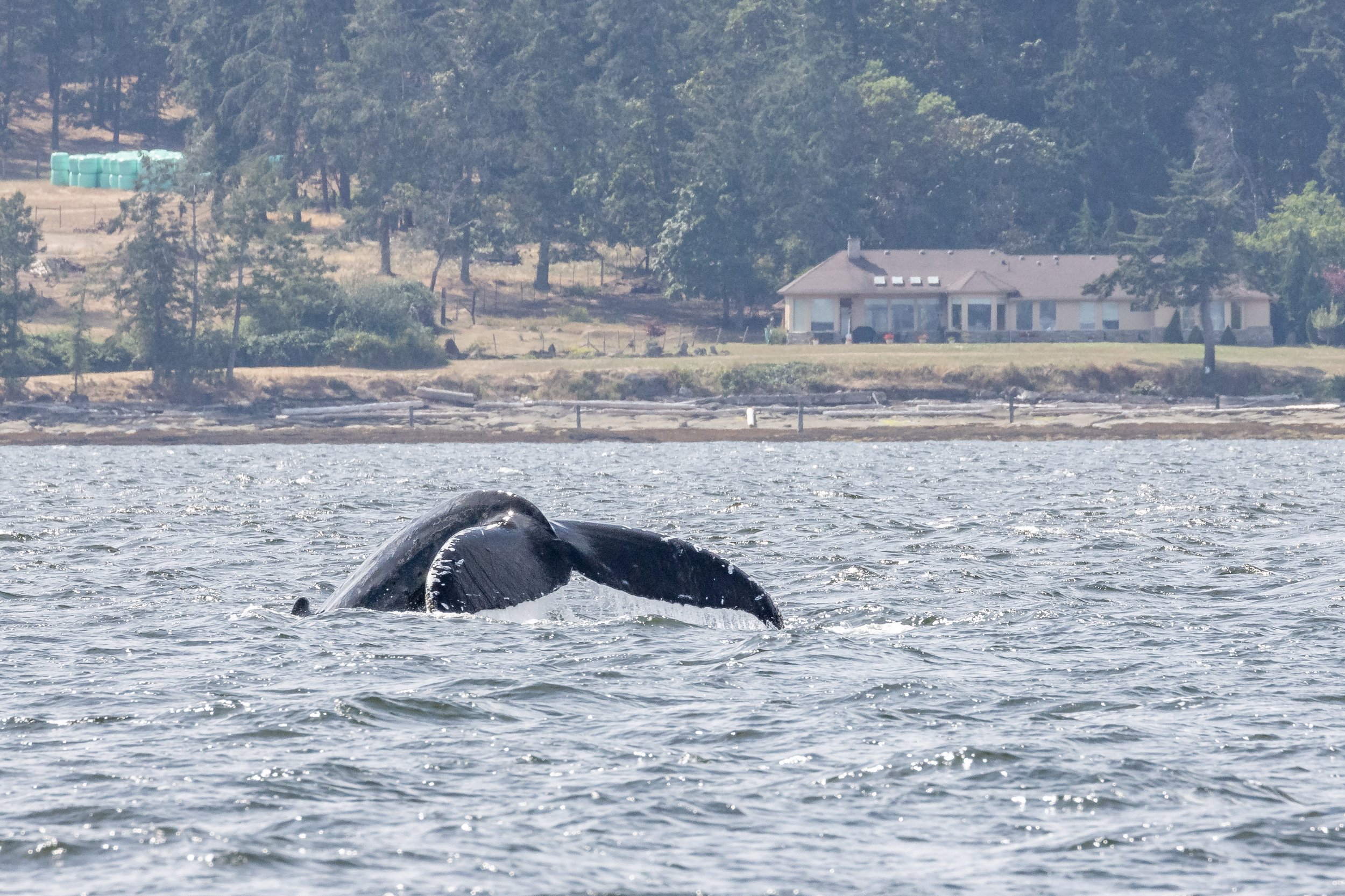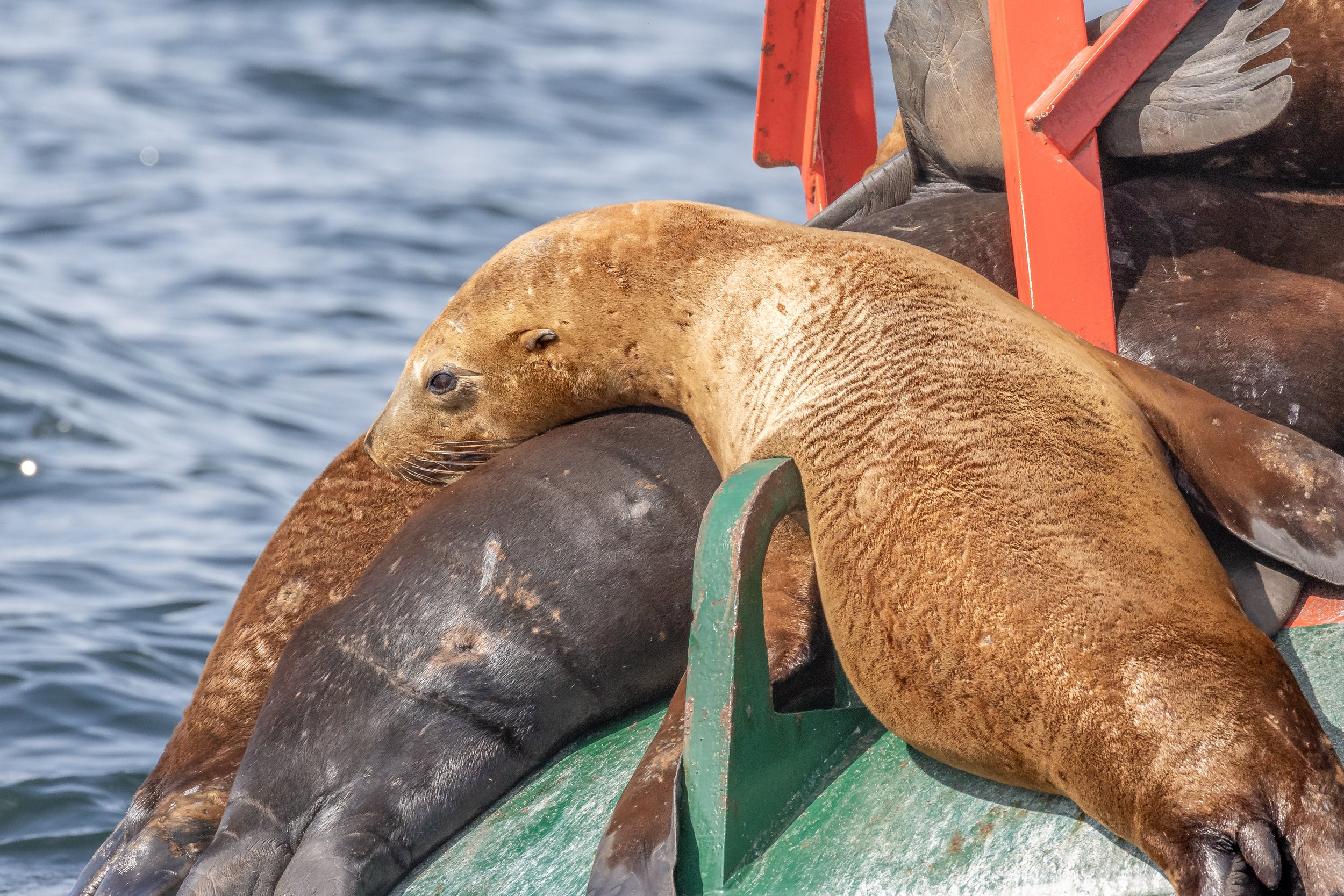August 27, 2022, 10:30 AM - Fader Near Apex and Strike in Stuart Channel
Today our boats set off Southbound in search of whales. While we did not have any early morning sightings to go off of, we were certain we would be able to find whales none the less!
Cascadia heading south through Dodd Narrows, stopping by Norway Island to view some Harbour seals before continuing south and heading out of Active Pass and into the Strait of Georgia. Keta and Kula had a similar routes, but they exited out of Porlier Pass and Gabriola Pass respectively. Valdez Island and Galiano Island’s shorelines are popular areas for our Humpbacks to gather and forage in.
While we did not find any Humpbacks near the coastline, we did get word of a Humpback further south near Apex.
Today we spent some time with Fader who was busy eating away along the Canada-US border. He was doing some deep dives today and was a bit tricky to track. He needs to continue building up his fat reserves for his big migration back south over the winter months. Each year our humpback whales make this 6,000 km journey from their northern feeding grounds around Vancouver Island down to their tropical breeding grounds, and then back up again in the spring. Since we are an area of such high productivity it’s a great place to feed. If you’ve ever noticed how poor the visibility in our waters is compared to tropical places, it’s because there is a ton of microscopic organisms that are in the water blocking the light. It’s estimated that each tablespoon of water here contains up to a million of these animals! If you look in the microscope you might be able to catch a view of some of these planktonic animals, also known as zooplankton. There are also microorganisms that are using sunlight for their energy, phytoplankton! These tiny organisms are what form the base of our food chain. Down in the tropical waters, there aren’t as many available nutrients in the water so you get crystal clear views, unobstructed by these micro-organisms. Since our humpbacks feed on the plankton, krill, and small schooling fish there isn’t much food for them down there so they mostly survive off their fat reserves, only feeding very opportunistically.
So why make the migration? It’s because there aren’t any of their main predators, Orca, down in the tropical waters. Orca will hunt humpback whales when they are smaller and more vulnerable; such as calves. If they give birth to their calves where there aren’t Orca around, then it gives time for the calf to get big enough to be less susceptible to predators once they enter the waters that have Orca again. Orca aren’t found in tropical waters since the warmer conditions will cause them to have issues with their skin.
After watching as Fader dove beneath the waves for his food we left and started to head back in the direction of Nanaimo. As we were approaching Dodd Narrows south of Nanaimo suddenly another humpback appeared! it was Strike! As we first got there suddenly she burst out of the water in a single show of her athleticism! After this single breach, we watched as she travelled around the area, diving and showing off her tail flukes, likely feeding just like we saw with Fader. After spending a few more minutes with Strike we returned to the harbour.
Today’s photo were taken by Marine Naturalists Rebeka Pirker and Vanessa Vereschahen.
Fader (BCY0195). Photo by Beka Pirker.
Fader (BCY0195). Photo by Vanessa Vereschahen.
Strike (KEX0045). Photo by Beka Pirker.
Strike (KEX0045). Photo by Beka Pirker.
Photo by Beka Pirker.
Photo by Beka Pirker.
Photo by Beka Pirker.
Mmmm….dinner. Photo by Vanessa Vereschahen.
Photo by Vanessa Vereschahen.
Cotton Candy Clouds. Photo by Vanessa Vereschahen.










